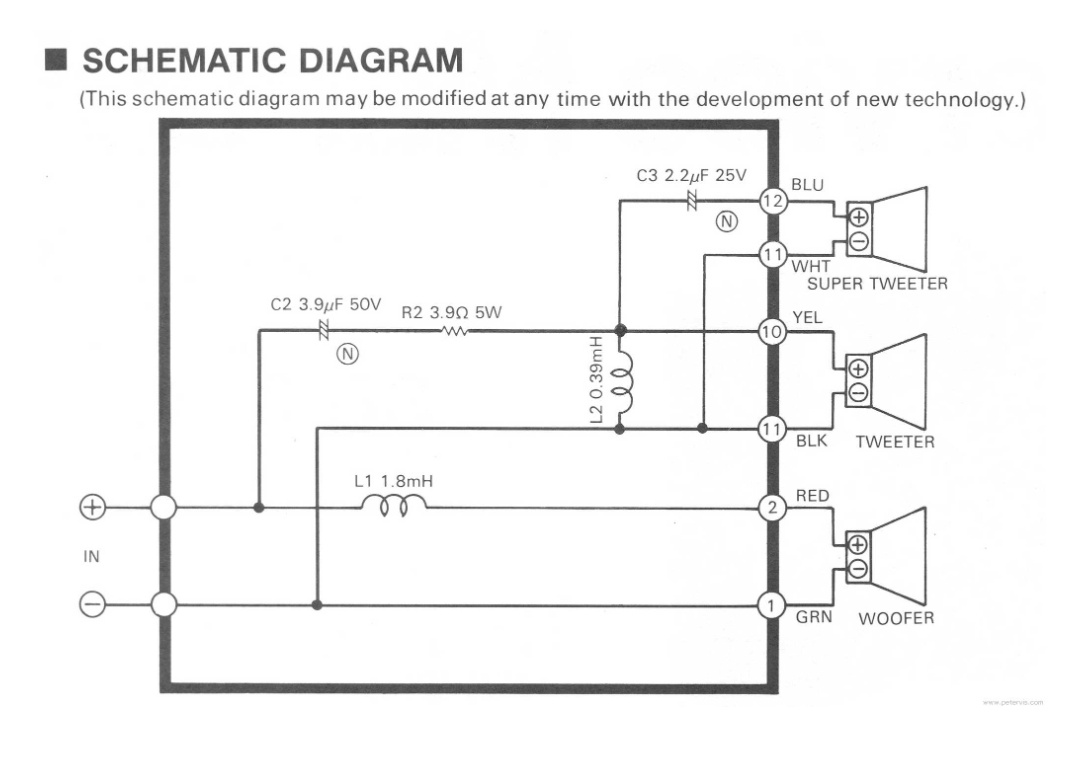this post was submitted on 15 Mar 2024
4 points (100.0% liked)
Audio Electronics
116 readers
1 users here now
A place to discuss the inner workings of audio/music equipment.
Rules:
- Posts must be related to the subject of music/audio electronics
- Be nice to everyone
founded 1 year ago
MODERATORS
you are viewing a single comment's thread
view the rest of the comments
view the rest of the comments

Rather than modify the circuit to try to work around the bad super tweeters I'd try to match its specs (probably just tops out at a higher frequency than the regular tweeter) with a replacement tweeter from Parts Express. Looks like there's an inductor (?) crossing both +/- on the regular tweeter that's probably soldered to a board and accessing it and attempting to bypass it is probably a bigger job than just replacing the super tweeter and will likely have unintended effects that may include killing the regular tweeter as well. Replacing the super tweeter is almost certainly the path of least resistance and will preserve the frequency response of the original design as much as is possible - should be pretty close.
Thanks. I haven't told the whole story. In fact one of the tweeter is also dead. As I don't plan to invest for such an old piece of hardware (I'm not even sure they are particularly good to begin with), I had the idea to replace both tweeters with a pair of Visaton FR8JS who are cheap, have convincing specs and will fit perfectly in the hole of the previous tweeters. I did not find a match for super tweeters ( and I don't want to modify the cabinet). The crossover circuit is easily accessible (solderer on the other side of the connectors plate) so il would try to bypass the crossover.
Gotcha. Should be able to connect the new tweeter before the original inductor "L2" and get good performance - I wouldn't bypass the crossover completely or you'll likely blow the new tweeters, and the sound wouldn't be as good as it would be running the tweeter through the crossover.